Inverse Relations - Definition, Examples, Quiz, FAQ, Trivia
Learn how quantities relate inversely with easy explanations, examples, and practice activities
What is an Inverse Relation?
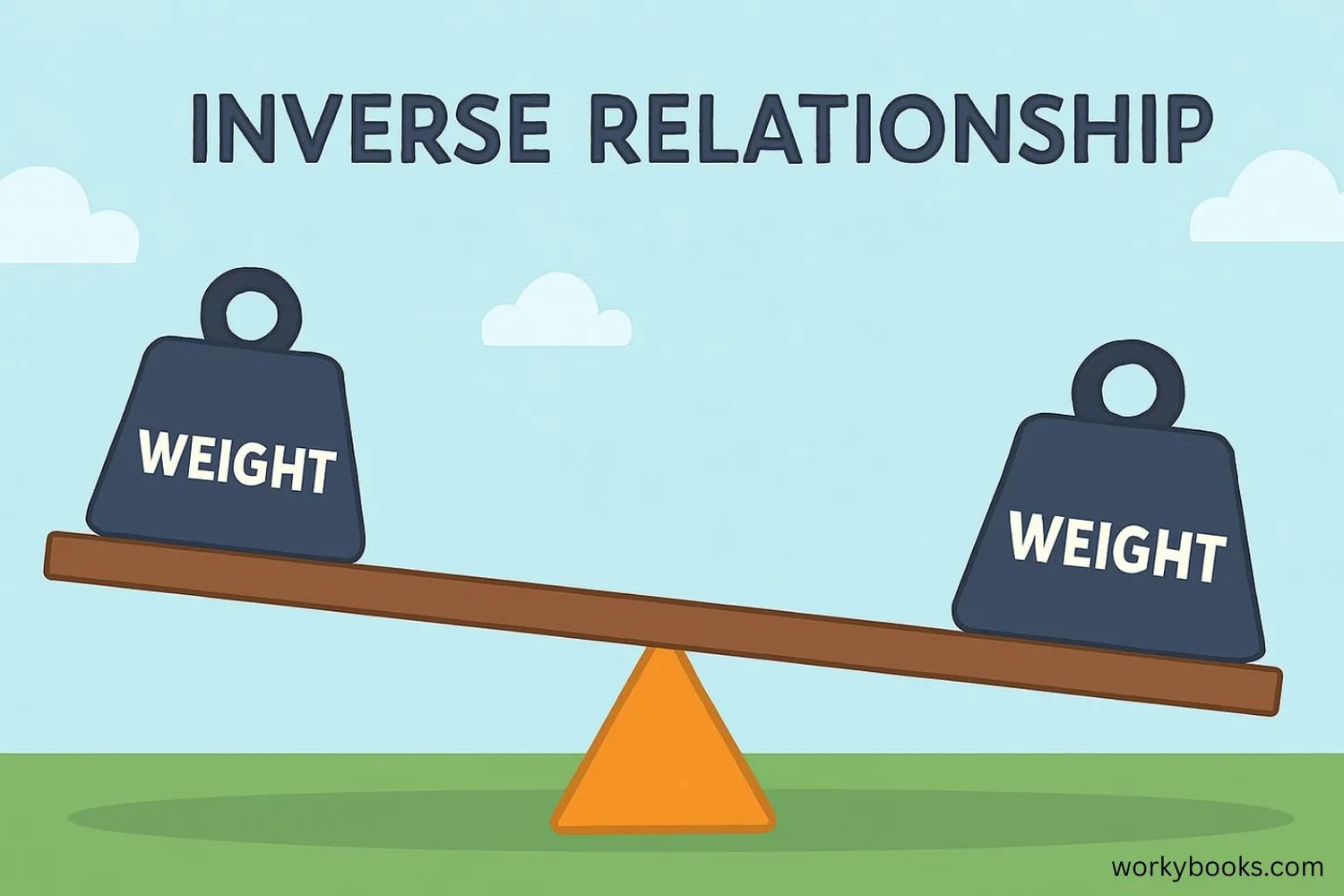
An inverse relation is a special connection between two quantities where when one increases, the other decreases. Think of it like a seesaw: when one side goes up, the other side goes down.
In mathematics, we say two quantities are inversely related if their product is always the same. For example, if you're dividing a fixed amount of candy among friends, the more friends you have, the less candy each person gets.
Understanding inverse relations helps us solve many real-world problems, from sharing snacks to planning travel time.
Key Concept
In an inverse relation, as one quantity increases, the other decreases proportionally so that their product remains constant.
Inverse Variation Definition
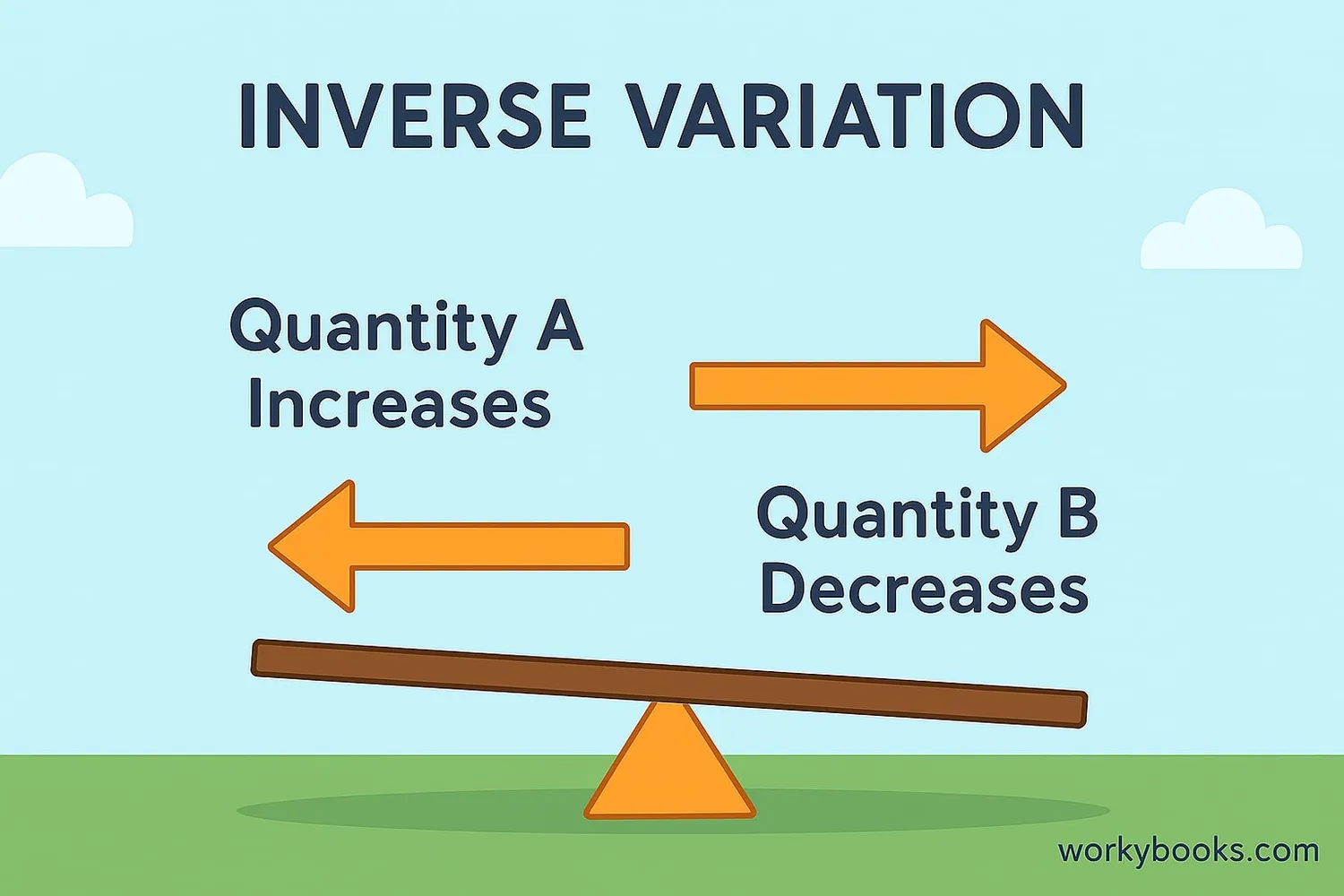
Inverse variation is a specific type of inverse relation where two quantities change in opposite directions at a constant rate. We say that one quantity varies inversely as the other.
The mathematical definition is: Two quantities, x and y, vary inversely if their product is always the same constant value (k). This is written as:
Inverse Variation Definition
or
where k is the constant of variation
Remember
In inverse variation, the product of the two quantities always remains the same, no matter how they change.
Inverse Relationship Formula
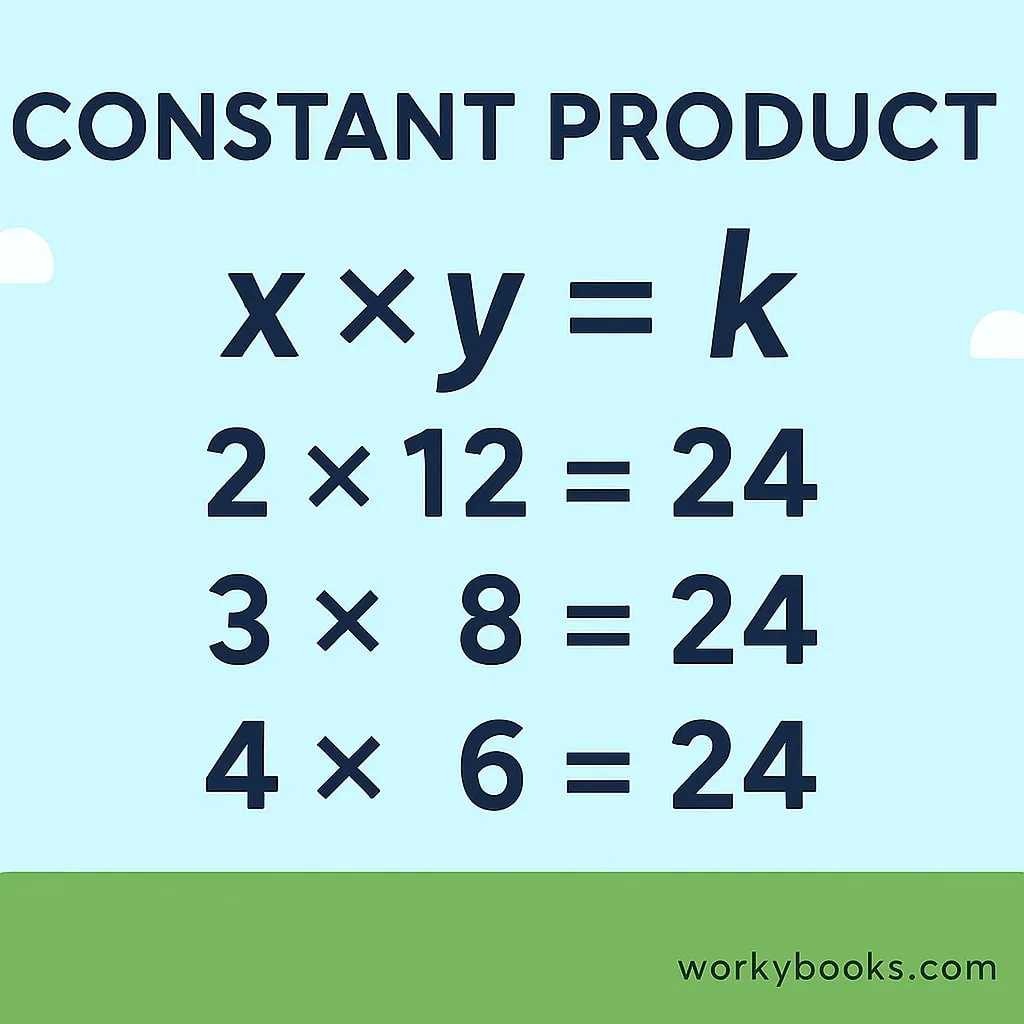
The formula for inverse relationship is simple but powerful. It helps us solve problems where quantities change in opposite directions.
The basic formula is:
Inverse Relationship Formula
where:
x and y are the two quantities that vary inversely
k is the constant of variation (the product that always stays the same)
or
To use this formula, follow these steps:
1. Find the constant k using known values of x and y
2. Use k to find missing values when you know either x or y
Formula Tip
Remember that in inverse relations, the product remains constant. If x doubles, y must halve to keep the product the same.
Direct vs Inverse Proportion
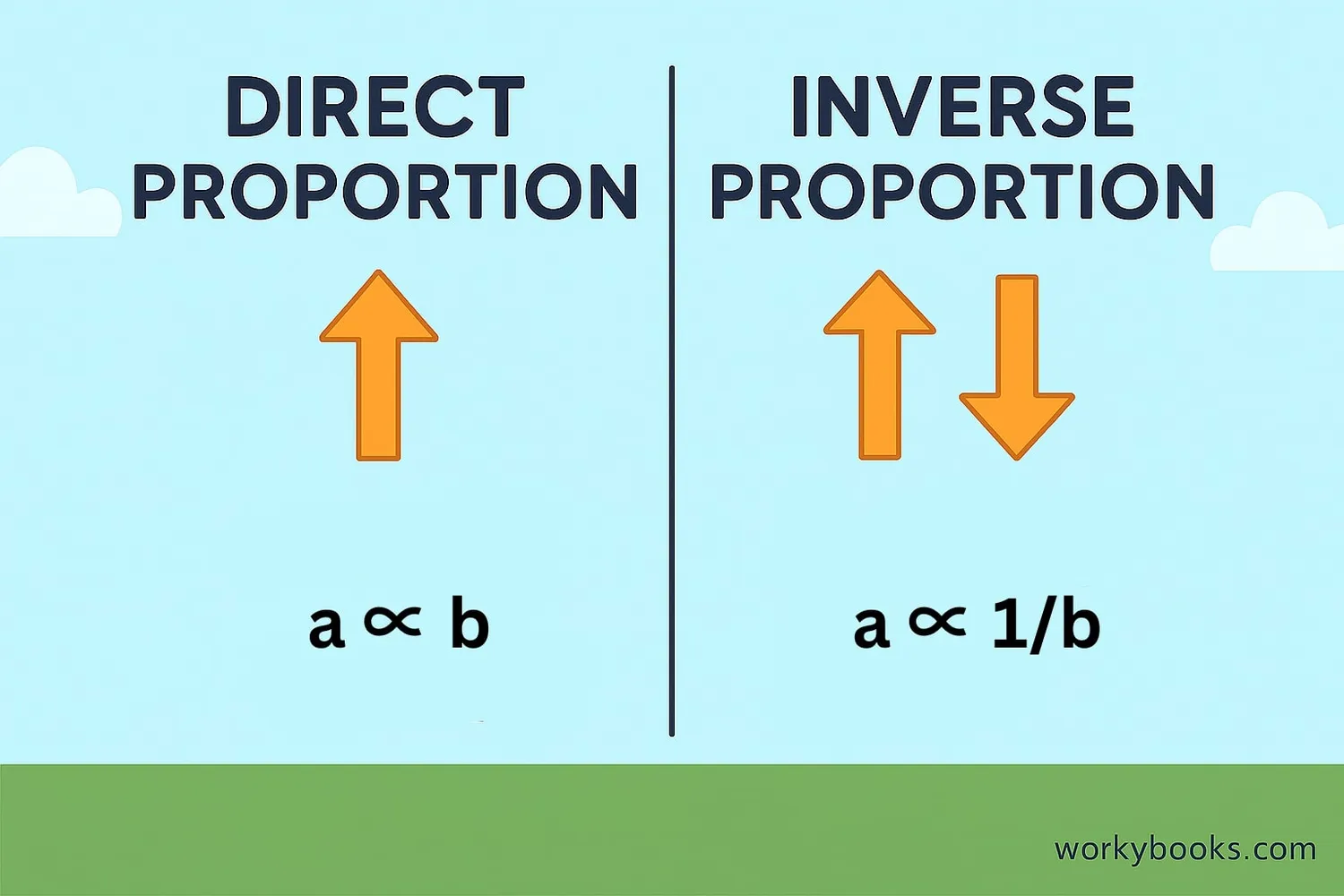
It's important to understand the difference between direct and inverse proportion. Both are types of relationships between quantities, but they work in opposite ways.
Direct Proportion: Both quantities increase together or decrease together.
Example: The more hours you work, the more money you earn.
Formula: y = kx (where k is the constant)
Inverse Proportion: One quantity increases while the other decreases.
Example: The more people sharing a pizza, the smaller each slice.
Formula: y = k ÷ x (where k is the constant)
Here's a table to help you remember the difference:
| Type | When x increases | When x decreases | Formula | Example |
|---|---|---|---|---|
| Direct Proportion | y increases | y decreases | y = kx | Work hours and pay |
| Inverse Proportion | y decreases | y increases | y = k ÷ x | People sharing pizza |
Comparison Tip
To remember the difference: Direct means "same direction", Inverse means "opposite direction".
Inverse Variation Examples & Word Problems
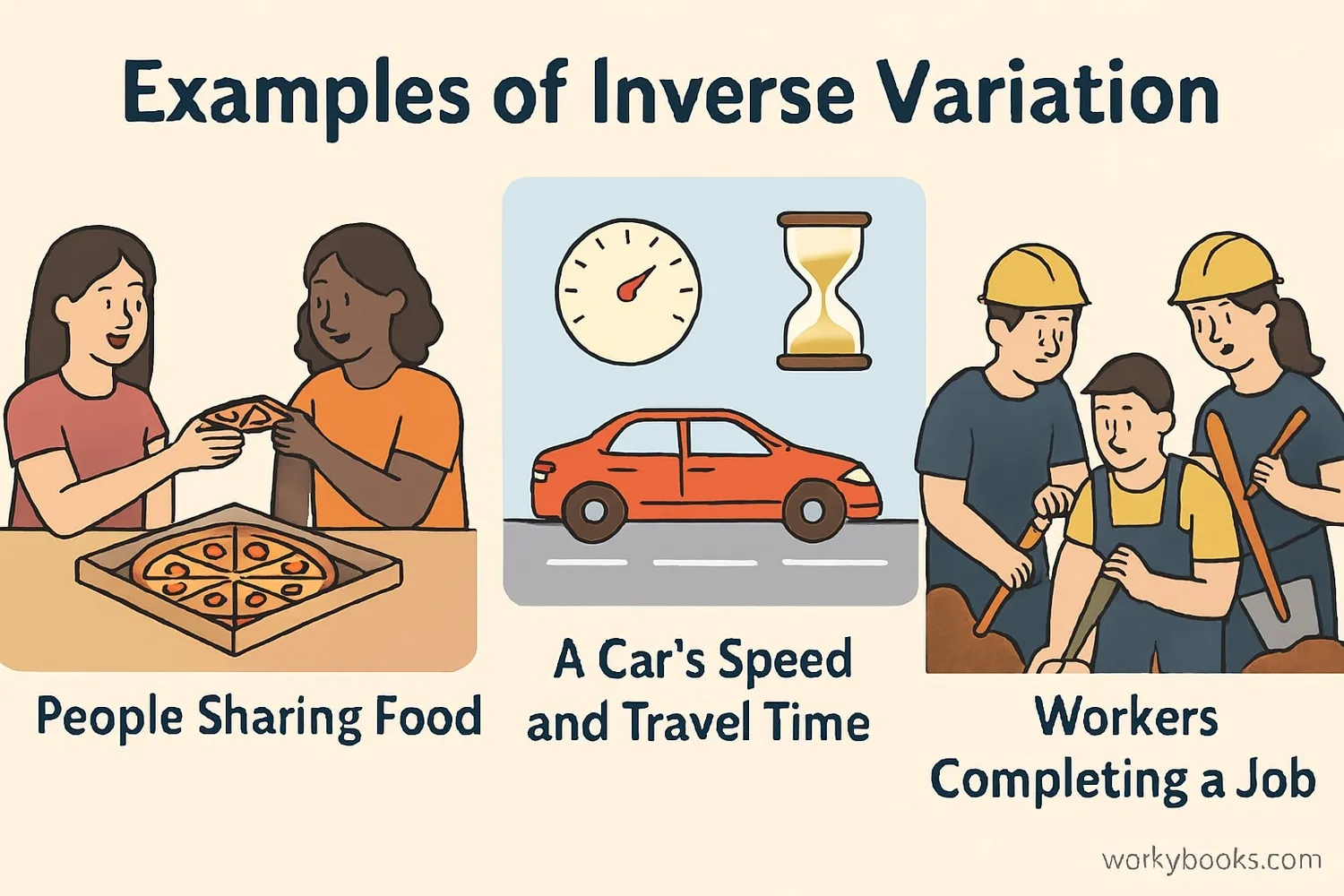
Let's look at some examples of inverse variation in real life and solve a few word problems:
Example 1: Sharing Pizza
If a pizza has 12 slices and is shared equally among friends:
• 2 friends → 6 slices each
• 3 friends → 4 slices each
• 4 friends → 3 slices each
Notice: Friends × Slices = 12 (constant)
Example 2: Speed and Time
To travel 120 miles:
• At 60 mph → 2 hours
• At 40 mph → 3 hours
• At 30 mph → 4 hours
Notice: Speed × Time = 120 (constant)
Word Problem 1:
It takes 6 workers 4 hours to paint a classroom. How long would it take 8 workers to do the same job?
Solution: This is inverse variation because more workers means less time.
Workers × Time = Constant
6 × 4 = 24
8 × Time = 24
Time = 24 ÷ 8 = 3 hours
Word Problem 2:
A recipe that serves 8 people requires 4 cups of flour. How much flour is needed to serve 12 people?
Solution: This is direct variation (more people need more flour), not inverse!
People ÷ Flour = Constant
8 ÷ 4 = 2 people per cup
12 ÷ Flour = 2
Flour = 12 ÷ 2 = 6 cups
Practice Tip
When solving word problems, first determine if the relationship is direct (both increase together) or inverse (one increases as the other decreases).
Inverse Relations Practice Quiz
Test your understanding of inverse relations with this 5-question quiz. Choose the correct answer for each question.
Frequently Asked Questions
Here are answers to common questions about inverse relations:
Math Trivia
Discover interesting facts about inverse relations and mathematics:
Ancient Understanding
The concept of inverse relationships was understood by ancient mathematicians. The Babylonians, around 1800 BCE, used inverse relationships in their calculations for construction and trade.
Boyle's Law
In science, Boyle's Law is a famous inverse relationship. It states that the pressure of a gas is inversely proportional to its volume when temperature is constant. This means if you decrease the volume of a gas, its pressure increases.
Gravity and Distance
The force of gravity between two objects is inversely proportional to the square of the distance between them. This means if you double the distance, the gravitational force becomes one-fourth as strong!
Musical Harmony
In music, the pitch of a string is inversely related to its length. This is why shorter strings produce higher notes. This relationship was discovered by the ancient Greek mathematician Pythagoras.





